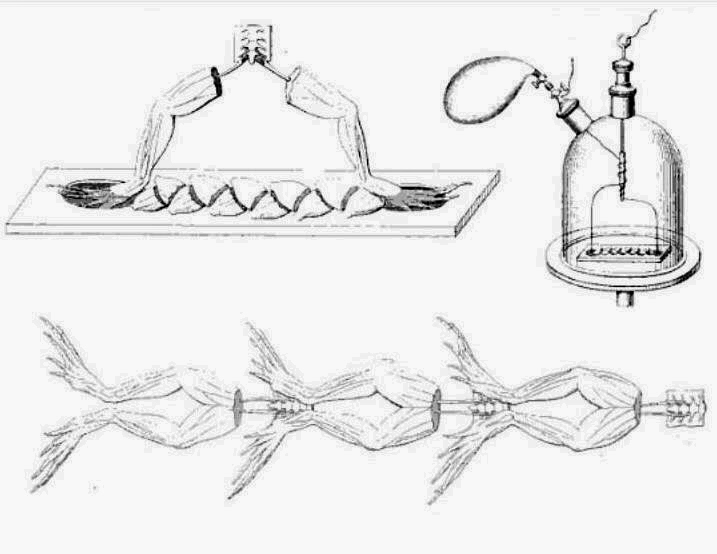
Early experimenters in electricity sometimes dealt in frogs’ thighs. Dissecting a frog creates an “injury potential” in its muscles, which can then be arranged in series to produce a kind of biological battery. Carlo Matteucci strung together 12 to 14 half-thighs to make a “frog battery” strong enough to decompose potassium iodide; he was able to induce some effect even with living frogs.
Matteucci did similar work with eel, pigeon, and rabbit batteries. In 1803 Giovanni Aldini used a galvanoscope made of frogs to detect current in a circuit that ran from an ox’s tongue to its ear through Aldini’s own body. The mechanisms underlying these results weren’t always clearly understood, but they formed important early strides in bioelectrochemistry.
